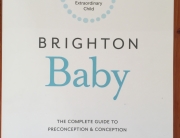 Caesarean section rates are at an all time high in Australia (28.8%) and the United States (30.2%). As vitamin D is crucial for proper muscle function, the researchers examined the relationship between vitamin D deficiency and caesarean section rates. Between 2005 and 2007, 253 women who gave birth in a Massachusetts hospital were found to be nearly four times more likely to have a caesarean section if their serum vitamin D levels were below 37.5nmol/L than those levels at 37.5nmol/L or greater. The authors concluded that vitamin D deficiency is associated with an increased risk of caesarean section.Vitamin D has been receiving so much research over the last few years and this study demonstrates the broader functions of vitamin D. Absolutely insist that your vitamin D levels are monitored throughout pregnancy and supplement if necessary – remember that you need to use the D3 form!Association between vitamin D deficiency and primary caesarean section.BACKGROUND: At the turn of the 20th century, women commonly died in childbirth due to rachitic pelvis. Although rickets virtually disappeared with the discovery of the hormone vitamin D, recent reports suggest vitamin D deficiency is widespread in industrialized nations. Poor muscular performance is an established symptom of vitamin D deficiency. The current U.S. caesarean birth rate is at an all-time high of 30.2%. We analysed the relationship between maternal serum 25-hydroxyvitamin D [25(OH) D] status, and prevalence of primary caesarean section. METHODS: Between 2005 and 2007, we measured maternal and infant serum 25(OH) D at birth and abstracted demographic and medical data from the maternal medical record at an urban teaching hospital (Boston, MA) with 2500 births per year. We enrolled 253 women, of whom 43 (17%) had a primary caesarean. RESULTS: There was an inverse association with having a caesarean section and serum 25(OH) D levels. We found that 28% of women with serum 25(OH)D less than 37.5 nmol/litre had a caesarean section, compared with only 14% of women with 25(OH)D 37.5nmol/litre or greater (P = 0.012). In multivariable logistic regression analysis controlling for race, age, education level, insurance status, and alcohol use, women with 25(OH)D less than 37.5 nmol/litre were almost 4 times as likely to have a caesarean than women with 25(OH)D 37.5 nmol/litre or greater (adjusted odds ratio 3.84; 95% confidence interval 1.71 to 8.62). CONCLUSION: Vitamin D deficiency was associated with increased odds of primary caesarean section.
Caesarean section rates are at an all time high in Australia (28.8%) and the United States (30.2%). As vitamin D is crucial for proper muscle function, the researchers examined the relationship between vitamin D deficiency and caesarean section rates. Between 2005 and 2007, 253 women who gave birth in a Massachusetts hospital were found to be nearly four times more likely to have a caesarean section if their serum vitamin D levels were below 37.5nmol/L than those levels at 37.5nmol/L or greater. The authors concluded that vitamin D deficiency is associated with an increased risk of caesarean section.Vitamin D has been receiving so much research over the last few years and this study demonstrates the broader functions of vitamin D. Absolutely insist that your vitamin D levels are monitored throughout pregnancy and supplement if necessary – remember that you need to use the D3 form!Association between vitamin D deficiency and primary caesarean section.BACKGROUND: At the turn of the 20th century, women commonly died in childbirth due to rachitic pelvis. Although rickets virtually disappeared with the discovery of the hormone vitamin D, recent reports suggest vitamin D deficiency is widespread in industrialized nations. Poor muscular performance is an established symptom of vitamin D deficiency. The current U.S. caesarean birth rate is at an all-time high of 30.2%. We analysed the relationship between maternal serum 25-hydroxyvitamin D [25(OH) D] status, and prevalence of primary caesarean section. METHODS: Between 2005 and 2007, we measured maternal and infant serum 25(OH) D at birth and abstracted demographic and medical data from the maternal medical record at an urban teaching hospital (Boston, MA) with 2500 births per year. We enrolled 253 women, of whom 43 (17%) had a primary caesarean. RESULTS: There was an inverse association with having a caesarean section and serum 25(OH) D levels. We found that 28% of women with serum 25(OH)D less than 37.5 nmol/litre had a caesarean section, compared with only 14% of women with 25(OH)D 37.5nmol/litre or greater (P = 0.012). In multivariable logistic regression analysis controlling for race, age, education level, insurance status, and alcohol use, women with 25(OH)D less than 37.5 nmol/litre were almost 4 times as likely to have a caesarean than women with 25(OH)D 37.5 nmol/litre or greater (adjusted odds ratio 3.84; 95% confidence interval 1.71 to 8.62). CONCLUSION: Vitamin D deficiency was associated with increased odds of primary caesarean section.
J Clin Endocrinol Metab. 2009 Mar; 94(3):940-5.PMID: 19106272



































